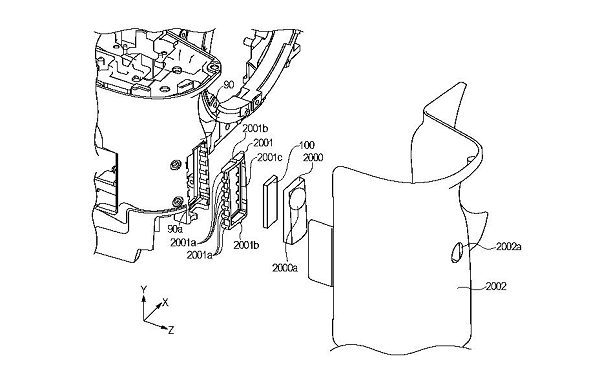
In these two patent applications, Canon is exploring adding haptic feedback into the grip surface of the camera. These are two separate patent applications but discuss similar functions, so I’ll lump them all in here.
When I first read this I didn’t think much about it because Canon has done these patents before, until I realized that in a world that will soon have global shutters or fast enough rolling shutter sensors, the mechanic shutter “click” is going away. All we are left with, especially on cameras with fast and continuous EVFs is just some form of blinking visual indicator that the camera took a picture or that you did some kind of control action.
The visual feedback may not be enough and I’d argue it’s easily missed. I remember the first time I used an RF camera in electronic shutter mode, it was a bit confusing when a picture was taken. It was easily missed, at least it was for me. Also, it makes no sense to remove the “click” only to have the camera have to make another noise at you either. So some form of feedback that doesn’t rely on the EVF isn’t a bad idea, for those that find the visual feedback not enough on today’s or the future’s completely silent cameras.
Enter these patent applications describing two methods of adding haptic feedback into a mirrorless camera. There was an older implementation of this that I recall that was on the shutter button. Perhaps they felt that caused too many issues with the shutter action, caused misfiring of the shutter over time, or had reliability issues. In these patent applications, the feedback motor is underneath the grip, your middle fingers would feel the feedback as your hand grips the camera.
According to Canon in mangled machine translation, the purpose of these patent applications is;
A camera has been disclosed that can notify the user of the user’s operation by vibration when the user operates an operating member in an environment such as a concert where no sound can be produced
Patent Application 2023-180872
This patent application describes a vibration motor surrounded by a rubber isolation assembly. Isolating the motor will limit the effect of motion blur that could occur by the vibration.
In this patent, 2002a is the piece that vibrates under your finger, and Canon wants to limit the amount of vibration that occurs to the actual grip (2002). Any vibration in 2002 could then be transmitted to the camera body/sensor and potentially cause motion blur. Item 2001 is the silicon rubber surrounding the piezoelectric motor which isolates the vibration from the rest of the camera.


Patent Application 2023-180873
In this patent application, Canon goes into more detail on how item 2001 isolates the vibration and how that is mounted to the camera, and also a different technique to pass the haptic notification to the user. In this case, Canon uses a rectangular motor instead of a button that sits under the rubber of the grip. Where the piezoelectric motor is located, Canon makes the grip material thinner (.5mm) so that the feedback is felt by the photographer.


In the above image, 2002 is the rubberized grip material, 2002a is where it is purposely thinned out under the motor (2003a). The motor is then surrounded by rubber to isolate it from the camera (2001).
In the main image, this shows a 1 series camera body, with what appears to be two of these motors in both grips as well. That doesn’t limit this application to a 1 series camera, but if a 1 series camera is the first camera with a Global Shutter from Canon I could see this being part of that implementation.
As with all patent applications, this is a look into Canon’s research and may not end up in an actual product.
Source: Japan Patent Application 2023-180872
Source: Japan Patent Application 2023-180873
Some of our articles may include affiliate links. If you purchase through these links, we may earn an affiliate commission at no extra cost to you.






